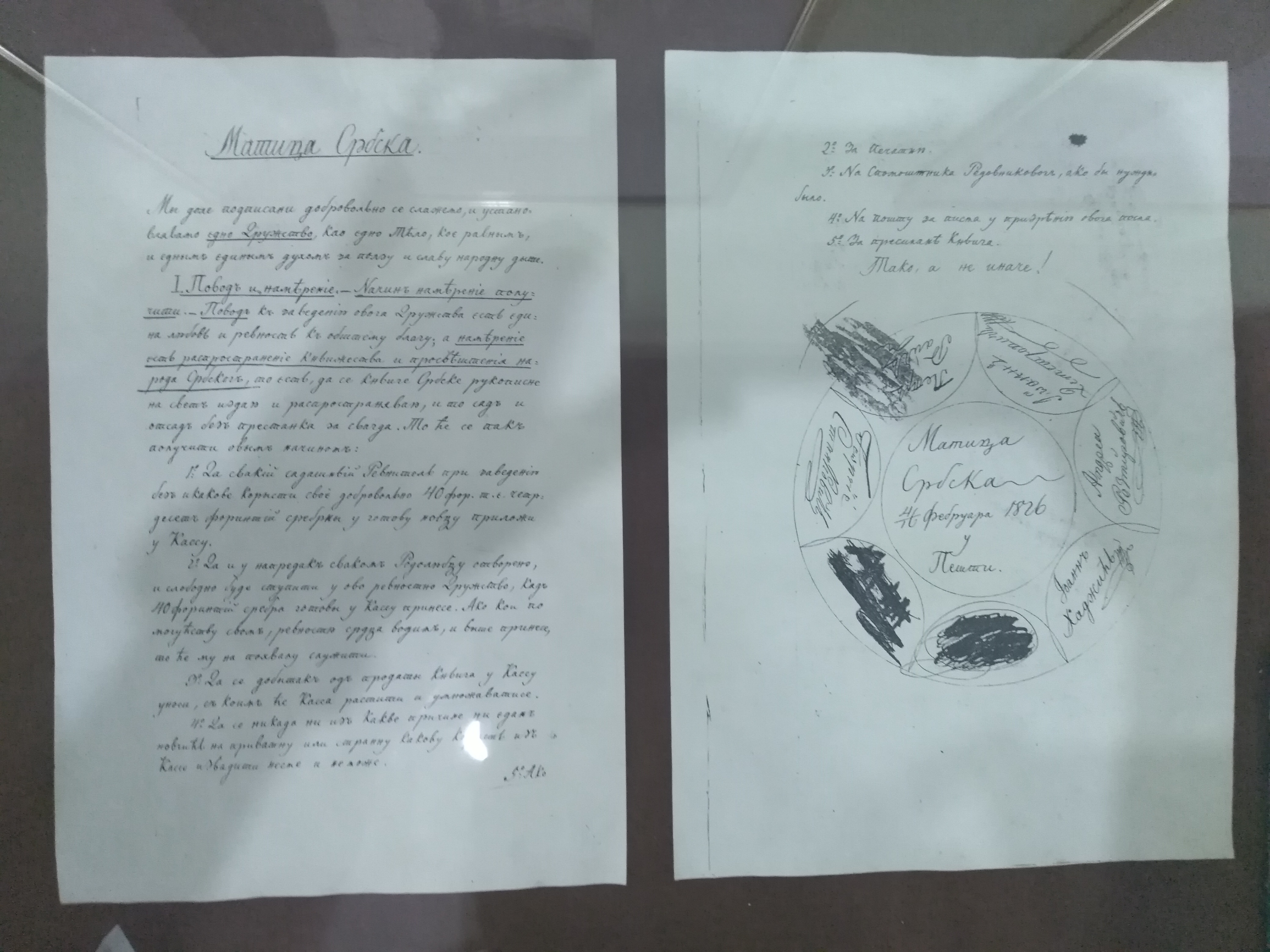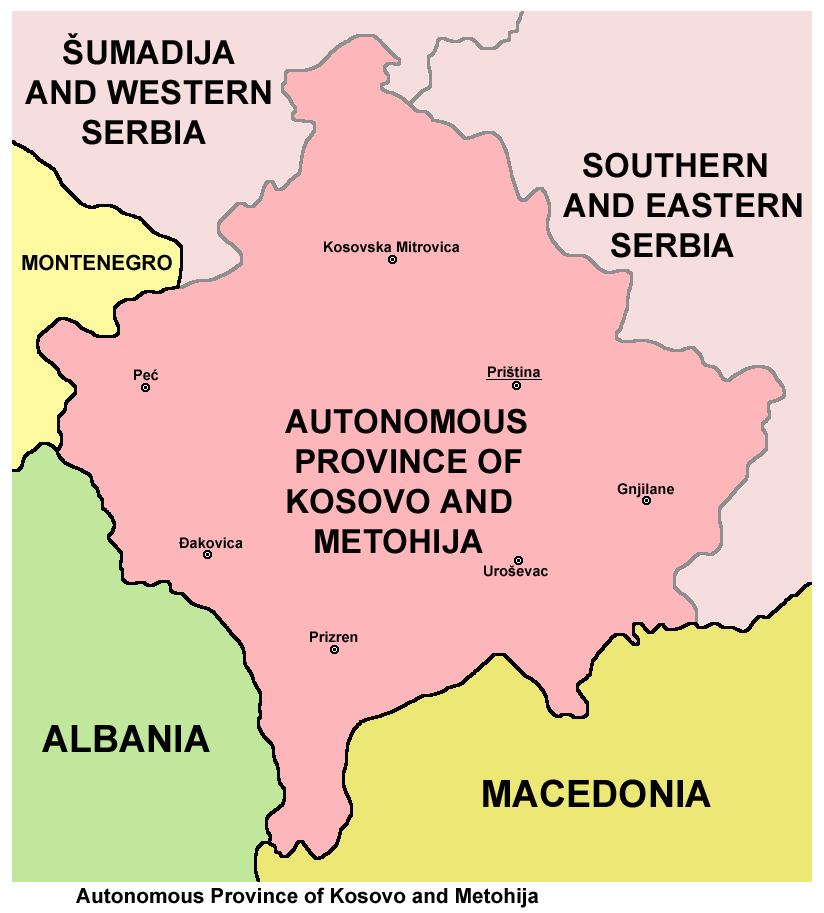|
Živojin Rakočević
Živojin Rakočević (; born 1973) is a Serbian journalist, writer, poet and publicist. Biography Rakočević was born in 1973 in the village of Sela, SR Montenegro, SFR Yugoslavia. He graduated from the Faculty of Philology at the University of Priština and received his master's degree from the University of Belgrade. He is the former editor-in-chief of KIM Radio and a former member of the Republic Broadcasting Agency from 2009 to 2014. He was a board member of the Anti-Corruption Agency from 2018 to 2020. He has been writing for Politika for more than ten years. He has been the director of the Gračanica Cultural Center since 2013. He is a member of the management board of the Association of Journalists of Serbia (UNS) and was the vice president of UNS from 2009 to 2013. He is currently the president of UNS. Together with Mitar Reljić, he visited and photographed numerous Serbian cemeteries, many of which were destroyed by planning, in the territory of Kosovo and Met ... [...More Info...] [...Related Items...] OR: [Wikipedia] [Google] [Baidu] [Amazon] |
SR Montenegro
The Socialist Republic of Montenegro ( sh-Latn-Cyrl, separator=" / ", Socijalistiƒçka Republika Crna Gora, –°–æ—Ü–∏—ò–∞–ª–∏—Å—Ç–∏—á–∫–∞ –Ý–µ–ø—É–±–ª–∏–∫–∞ –¶—Ä–Ω–∞ –ì–æ—Ä–∞), commonly referred to as Socialist Montenegro or simply Montenegro, was one of the six republics forming the Socialist Federal Republic of Yugoslavia and the nation state of the Montenegrins. It is a predecessor of the modern-day Montenegro. Socialist Montenegro was a non-nationalist state and Serbo-Croatian was its official language. Prior to its formation, Montenegro was part of Zeta banovina administrative unit of Kingdom of Yugoslavia. Between 1945 and 1963, the Montenegrin government embarked on a program of rapid industrialization, nationalization of private property, and collectivization of agriculture, following the wider Yugoslav socialist development strategy. Political control was exercised through the League of Communists of Montenegro, the local branch of the LCY, which played a central role ... [...More Info...] [...Related Items...] OR: [Wikipedia] [Google] [Baidu] [Amazon] |
1973 Births
Events January * January 1 – The United Kingdom, the Republic of Ireland and Denmark 1973 enlargement of the European Communities, enter the European Economic Community, which later becomes the European Union. * January 14 - The 16-0 1972 Miami Dolphins season, Miami Dolphins defeated the 1972 Washington Redskins season, Washington Redskins in Super Bowl VII, with the Dolphins ending the season a perfect 17-0. This marked the first and only time that an NFL team has had a perfect undefeated season, an achievement the team holds to this day. * January 15 – Vietnam War: Citing progress in peace negotiations, U.S. President Richard Nixon announces the suspension of offensive action in North Vietnam. * January 17 – Ferdinand Marcos becomes President for Life of the Philippines. * January 22 ** ''Joe Frazier vs. George Foreman, The Sunshine Showdown'': George Foreman defeats Joe Frazier to win the heavyweight world boxing championship in Kingston, Jamaica. ** A Royal Jorda ... [...More Info...] [...Related Items...] OR: [Wikipedia] [Google] [Baidu] [Amazon] |
Serbian Journalists
Serbian may refer to: * Pertaining to Serbia in Southeast Europe; in particular **Serbs, a South Slavic ethnic group native to the Balkans ** Serbian language ** Serbian culture **Demographics of Serbia, includes other ethnic groups within the country *Pertaining to other places **Serbia (other) **Sorbia (other) *Gabe Serbian (1977–2022), American musician See also * * * Sorbs * Old Serbian (other) Old Serbian may refer to: * someone or something related to the Old Serbia, a historical region * Old Serbian language, a general term for the pre-modern variants of Serbian language, including: ** the Serbian recension of Old Church Slavonic la ... {{Disambiguation Language and nationality disambiguation pages ... [...More Info...] [...Related Items...] OR: [Wikipedia] [Google] [Baidu] [Amazon] |
Serbs Of Montenegro
Serbs of Montenegro () or Montenegrin Serbs (), compose native and the Demographics of Montenegro#Nationality/Ethnicity, second largest ethnic group in Montenegro (32.93% of country's population), after the Montenegrins (ethnic group), ethnic Montenegrins. Additional 0.47% of the population is made up of people defining themselves as ''Serbs-Montenegrins'' () and ''Montenegrins-Serbs'' (). History During the Slavic migrations of the 6th and 7th centuries, most of the territory of modern-day Montenegro was settled by Serbs (which are the ancestors of modern Montenegrins) who they created several Serb principalities in the region; In southern parts of modern Montenegro, Principality of Duklja was formed, while western parts belonged to the Principality of Travunija. Northern parts of modern Montenegro belonged to the inner Principality of Serbia (early medieval), Principality of Serbia. All of those early polities were described in historiographical works of Byzantine Emperor Const ... [...More Info...] [...Related Items...] OR: [Wikipedia] [Google] [Baidu] [Amazon] |
Living People
Purpose: Because living persons may suffer personal harm from inappropriate information, we should watch their articles carefully. By adding an article to this category, it marks them with a notice about sources whenever someone tries to edit them, to remind them of WP:BLP (biographies of living persons) policy that these articles must maintain a neutral point of view, maintain factual accuracy, and be properly sourced. Recent changes to these articles are listed on Special:RecentChangesLinked/Living people. Organization: This category should not be sub-categorized. Entries are generally sorted by family name In many societies, a surname, family name, or last name is the mostly hereditary portion of one's personal name that indicates one's family. It is typically combined with a given name to form the full name of a person, although several give .... Maintenance: Individuals of advanced age (over 90), for whom there has been no new documentation in the last ten ... [...More Info...] [...Related Items...] OR: [Wikipedia] [Google] [Baidu] [Amazon] |
2004 Unrest In Kosovo
On 17–18 March 2004, violence erupted in Kosovo, leaving hundreds wounded and at least 19 people dead. The unrest was precipitated by unsubstantiated reports in the Kosovo Albanian media which claimed that three Kosovo Albanian boys had drowned after being chased into the Ibar River by a group of Kosovo Serbs. UN peacekeepers and NATO troops scrambled to contain a gun battle between Serbs and Albanians in the partitioned town of Mitrovica, Kosovo before the violence spread to other parts of Kosovo. Kosovo Serb communities and cultural heritage were attacked by crowds of Albanians. Serbs call the event the March Pogrom (), while the Albanians call it the March Unrest (). The violence resulted in the displacement of more than 4,000 Kosovo Serbs and other minorities. More than 935 houses, along with 35 Serbian Orthodox churches, monasteries and other religious buildings were destroyed. International and domestic courts in Pristina have prosecuted people who have taken part in ... [...More Info...] [...Related Items...] OR: [Wikipedia] [Google] [Baidu] [Amazon] |
SFR Yugoslavia
The Socialist Federal Republic of Yugoslavia (commonly abbreviated as SFRY or SFR Yugoslavia), known from 1945 to 1963 as the Federal People's Republic of Yugoslavia, commonly referred to as Socialist Yugoslavia or simply Yugoslavia, was a country in Central and Southeast Europe. It was established in 1945, following World War II, and lasted until 1992, dissolving amid the onset of the Yugoslav Wars. Spanning an area of in the Balkans, Yugoslavia was bordered by the Adriatic Sea and Italy to the west, Austria and Hungary to the north, Bulgaria and Romania to the east, and Albania and Greece to the south. It was a one-party socialist state and federation governed by the League of Communists of Yugoslavia, and had six constituent republics: Bosnia and Herzegovina, Croatia, Macedonia, Montenegro, Serbia, and Slovenia. Within Serbia was the Yugoslav capital city of Belgrade as well as two autonomous Yugoslav provinces: Kosovo and Vojvodina. The country emerged as Democratic Fede ... [...More Info...] [...Related Items...] OR: [Wikipedia] [Google] [Baidu] [Amazon] |
Matica Srpska
The Matica srpska ( sr-Cyrl-Latn, Матица српска, Matica srpska, ) is the oldest Serbian language independent, non-profit, non-governmental and cultural-scientific Serbian national institution. It was founded on June 1, 1826, in Pest, Hungary, Pest (today a part of Budapest) by the Serbs, Serbian Holy Roman Empire, habsburg legislator Jovan Hadžić and other prominent members of the Serbian Revolution and Serbian Revival, National Revival. The Matica was moved to Novi Sad in 1864. It is the oldest matica in the world. The main goals are to restore and promote Serbian national and cultural identity in the fields of art, science, spiritual creativity, economy and public life as well as to care for social development of Serbia. The literary and cultural society played a huge role in the flourishing of science and culture of the Serbs of Vojvodina, Serbia. The need for national homogenization, enlightenment, as well as the publication of Serbian books, were the main reaso ... [...More Info...] [...Related Items...] OR: [Wikipedia] [Google] [Baidu] [Amazon] |
Kosovo And Metohija
The Autonomous Province of Kosovo and Metohija (APKM) (; ), commonly known as Kosovo (; ) and abbreviated to Kosmet (from '' Kosovo'' and '' Metohija''; ) or KiM (), is an autonomous province that occupies the southernmost corner of Serbia, as defined by the country's constitution. The territory is the subject of an ongoing political and territorial dispute between the Republic of Serbia and the partially recognised Republic of Kosovo, with the APKM being viewed as the ''de jure'' interpretation of the territory under Serbian law; however, the Serbian government currently does not control the territories because they are administered by the Republic of Kosovo. Its claimed administrative capital and largest city is Pristina. The territory of the province, as defined by Serbian laws, lies in the southern part of Serbia and covers the regions of Kosovo and Metohija. The capital of the province is Pristina. The territory was previously an autonomous province of Serbia during ... [...More Info...] [...Related Items...] OR: [Wikipedia] [Google] [Baidu] [Amazon] |



